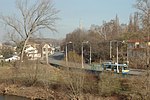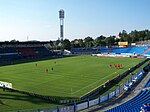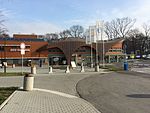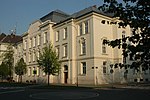12th Mechanised Division (Poland)

The 12th Bolesław Krzywousty Szczecin Mechanised Division (Polish: 12 Szczecińska Dywizja Zmechanizowana im. Bolesława Krzywoustego (12 DZ, 12 SDZ)) is a division of the Polish Armed Forces, headquartered in Szczecin. It traces its heritage back to the 1919 formation of the 6th Polish Rifle Division of the Blue Army in France. The division returned to Poland and was redesignated as the 12th Infantry Division (Polish: 12 Dywizja Piechoty) later that year, fighting in the Polish–Soviet War. During the September 1939 Invasion of Poland, the division was part of the southern group of the Prusy Army and was surrounded and destroyed by German forces during the Battle of Radom. It was briefly reformed in 1944 as part of the Home Army, and later that year the Polish People's Army briefly formed a 12th Infantry Division as part of the abortive 3rd Polish Army, but it was quickly broken up. The Polish People's Army reformed the division in Poznań during the final weeks of World War II, and it was sent to Szczecin to secure the area and expel the German population in the immediate postwar period. The division has remained headquartered at Szczecin since then, and was converted into a mechanised division in 1958.
Excerpt from the Wikipedia article 12th Mechanised Division (Poland) (License: CC BY-SA 3.0, Authors, Images).12th Mechanised Division (Poland)
Podolí, Ostrava Muglinov
Geographical coordinates (GPS) Address Nearby Places Show on map
Geographical coordinates (GPS)
| Latitude | Longitude |
|---|---|
| N 49.8513 ° | E 18.3097 ° |
Address
Podolí 839/19
712 00 Ostrava, Muglinov
Moravia-Silesia, Czechia
Open on Google Maps











